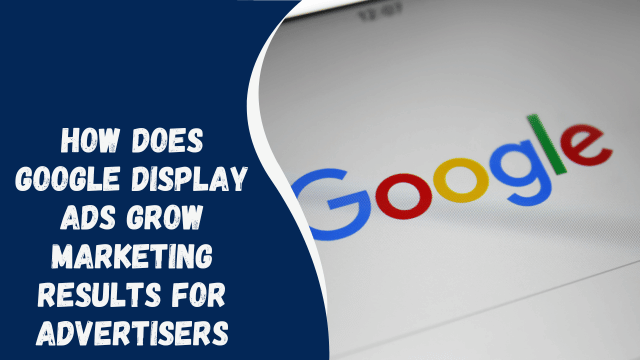How Does Google Display Ads Grow Marketing Results for Advertisers

In today’s digital age, marketing has evolved into a multifaceted landscape where advertisers continually seek innovative ways to promote their products or services. Google Display Ads has emerged as a powerful tool in this endeavor, offering advertisers a unique platform to reach their target audience. In this article, we will explore how Google Display Ads can significantly contribute to growing marketing results for advertisers.
Contents
- 1 Understanding Google Display Ads
- 2 The Reach of the Display Network
- 3 Targeting the Right Audience
- 4 Cost-Effective Advertising
- 5 Visual Appeal and Engagement
- 6 Measurable Performance Metrics
- 7 Enhancing Brand Visibility
- 8 Remarketing Strategies
- 9 Mobile Optimization
- 10 The Role of Ad Extensions
- 11 Ad Customization
- 12 Ad Placement Options
- 13 Ad Quality and Relevance
- 14 Tracking Conversions
- 15 The Future of Google Display Ads
- 16 Conclusion
Understanding Google Display Ads
Google Display Ads is an advertising platform offered by Google that allows advertisers to display their ads on a vast network of websites, mobile apps, and YouTube videos. Unlike traditional text-based ads, Display Ads are visually appealing and come in various formats, including images, videos, and interactive media.
The Reach of the Display Network
One of the key advantages of Google Display Ads is its extensive reach. It has the potential to reach over 90% of internet users worldwide. This immense reach provides advertisers with an opportunity to connect with a diverse audience across the globe.
Targeting the Right Audience
Google Display Ads offers precise targeting options, enabling advertisers to reach the audience most likely to be interested in their offerings. Advertisers can define their audience based on demographics, interests, behaviors, and even specific websites they visit. This ensures that marketing efforts are directed towards potential customers.
Cost-Effective Advertising
Compared to traditional advertising methods, Google Display Ads often prove to be more cost-effective. Advertisers can set their budget and bids, ensuring they get the most value for their advertising spend. This level of control over spending is a significant advantage for businesses of all sizes.
Visual Appeal and Engagement
The visual nature of Display Ads makes them highly engaging. Eye-catching visuals and compelling ad copies can captivate the audience’s attention and leave a lasting impression. Advertisers can convey their message effectively through images and videos, making their ads more memorable.
Measurable Performance Metrics
Google Display Ads provides detailed performance metrics, allowing advertisers to measure the effectiveness of their campaigns. From click-through rates to conversion tracking, advertisers can analyze the data and make informed decisions to optimize their ads further.
Enhancing Brand Visibility
Display Ads contribute to brand visibility. When users repeatedly see a brand’s ads across the web, it reinforces brand awareness. This recognition can lead to increased trust and a higher likelihood of conversions when users are ready to make a purchase decision.
Remarketing Strategies
Remarketing is a powerful strategy within Google Display Ads. It allows advertisers to re-engage with users who have previously visited their website but did not complete a desired action, such as making a purchase. Remarketing ads remind these users of the brand, increasing the chances of conversion.
How to Shoot Your Shot on Instagram
Mobile Optimization
With the growing use of mobile devices, Google Display Ads are optimized for mobile platforms. Advertisers can reach users on smartphones and tablets, ensuring that their ads are visible to a broad audience.
The Role of Ad Extensions
Ad extensions provide additional information to users and encourage them to take action. Google Display Ads offer various ad extensions like callout extensions, site link extensions, and location extensions, allowing advertisers to provide more context and entice potential customers.
Ad Customization
Google Display Ads can be customized to align with the branding and messaging of the advertiser. This level of customization ensures that ads are cohesive with the overall marketing strategy.
Ad Placement Options
Advertisers can choose where their ads appear, selecting specific websites, apps, or even placements within YouTube videos. This control over ad placement helps in ensuring that ads are displayed in relevant contexts.
Ad Quality and Relevance
To maintain the quality of ads displayed, Google assesses ad relevance and quality. High-quality ads that are relevant to the audience have a better chance of being displayed, further improving the ROI for advertisers.
Tracking Conversions
Tracking conversions is essential for measuring the success of Google Display Ads. Advertisers can set up conversion tracking to monitor specific actions taken by users after clicking on an ad, such as completing a purchase or signing up for a newsletter.
The Future of Google Display Ads
As technology continues to evolve, Google Display Ads will also adapt to new trends and innovations. Advertisers can expect more advanced targeting options, improved ad formats, and enhanced analytics in the future.
Conclusion
Google Display Ads are a valuable tool for advertisers looking to grow their marketing results. With its extensive reach, precise targeting, and cost-effective options, Google Display Ads offer a compelling solution for businesses aiming to enhance their online presence and drive conversions.



